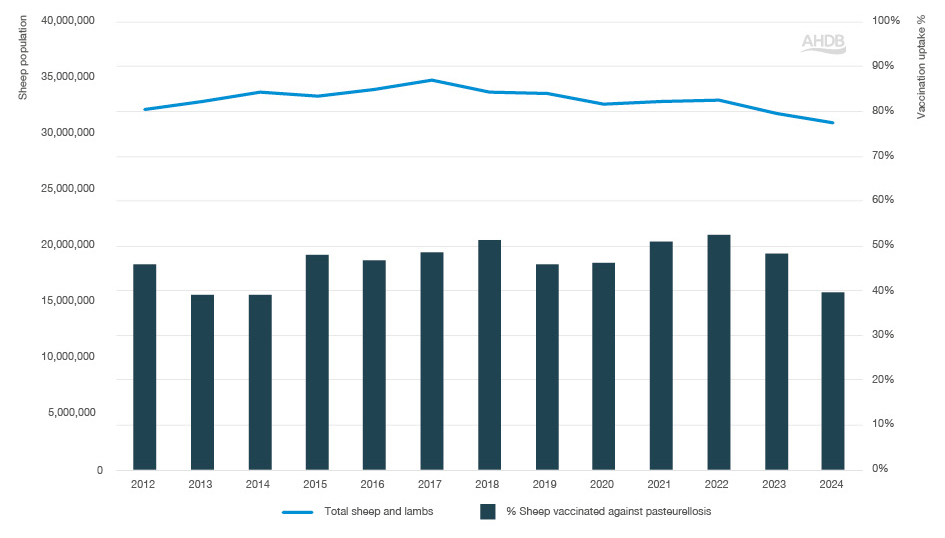- Home
- Knowledge library
- Pasteurellosis vaccines in sheep
Pasteurellosis vaccines in sheep
Pasteurellosis is a common cause of death in growing lambs in Great Britain, despite there being effective vaccines that offer protection against disease.
Bacteria previously identified as being Pasteurella species have been reclassified; the main species causing disease in sheep are now called Mannheimia haemolytica and Bibersteinia trehalosi. These bacteria can cause septicaemia and pneumonia in sheep of all ages, but are particularly associated with disease in lambs.
Most vaccines marketed in the UK for the control of pneumonic or systemic pasteurellosis are in combination with vaccines for clostridial diseases. Protection requires a primary course followed by annual booster doses.
The following pasteurellosis vaccines have been marketed in the UK:
- Heptavac P Plus is a multivalent clostridial vaccine for sheep that can also aid in the control of pneumonic and systemic pasteurellosis
- Ovipast Plus is a vaccine for the active immunisation of sheep as an aid in the control of pasteurellosis caused by M. haemolytica and B. trehalosi
- Ovivac P Plus is a multivalent clostridial vaccine for sheep that can also aid in the control of pneumonic and systemic pasteurellosis
Assumptions
Numerator
The number of doses of vaccine administered has been calculated by multiplying the number of packs sold by the number of doses per pack.
Denominator
The common industry recommendation for farms is to vaccinate lambs with a primary course of Pasteurella vaccine.
It is recommended that all adult sheep should be given a primary course and receive an annual booster.
The total number of vaccine doses that would be required to protect the national UK flock from pasteurellosis has been estimated based on the assumption that all lambs in flocks in June should receive two doses of vaccine and that the total breeding flock, as well as all rams, should get one annual booster vaccination.
Vaccination uptake
The estimated uptake of vaccines to provide protection to sheep from pasteurellosis follows a similar trend to that of clostridial vaccines.
This is not surprising, given that the main vaccines used are combination clostridia–pasteurellosis vaccines.
From 2022 to 2023, the estimated uptake for Pasteurella vaccines dropped from 52% to 48%.
The downward trend continued in 2024 with estimated uptake falling to 40%. This is likely due to ongoing vaccine supply chain issues.
Figure 1. Percentage of sheep vaccinated against pasteurellosis


